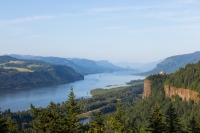CRC Press, Edited by Michael Poeschl and Leo M. L. Nollet: A comprehensive, fairly easy to read and understand treatise by 31 experts from around the world on the exciting topics of radionuclides, radiation, radioactivity and their presence and uses in the environment and food. Contributors and Editors are from Australia, Belgium, Czech Republic, England, Italy, Portugal, Saudi Arabia, Slovakia, Spain, Switzerland, and the USA. Topics: What are Radionuclides, Sources, Radioactivity in the Air, in Water, in Soils, Transport Processes and Modeling, in Foodstuffs and Food Raw Material, Radiation Detection Methods, Unmasking Illicit Trafficking of Nuclear and Radioactive Materials, Radiation Protection, Regulations, Food Irradiation.
James E. Smith, Michelle Jamshidi, West Virginia University, Department of Mechanical and Aerospace Engineering: Currently we spend our time on symptoms such as our shrinking abundance, real or perceived social inequities, minor environmental impacts, what others may or may not be doing, and our lack of personal prosperity. What we need are more entrepreneurs and innovators. They are the ones determined to break the cycle and truly find the answers to society’s problems.
Energy Northwest (Meredith Angwin) USofA
23.Nov.2017Meredith Angwin, Physical Chemist, Naturalist, Educator: The Northwest United States is blessed with civic-minded, publicly owned utilities. Energy Northwest is a not-for-profit public power agency: it owns Columbia Generating Station (nuclear), wind turbines, a solar installation, and a hydro facility. The electricity from these projects is sold, at-cost, to the project participants.
Michael Shellenberger, Environmental Progress: Let’s look at 2016. Germany installed four percent more solar panels but generated three percent less electricity from solar. Even when I’m in meetings with energy experts and I ask people if they can make a guess as to why they think that is, and you’d be shocked by how many energy experts have no idea. The reason is just that it wasn’t very sunny last year in Germany. Well, that probably meant that it was windier, right? Because if it’s not as sunny then maybe there’s more wind and those things can balance each other out? In truth, Germany installed 11 percent more wind turbines in 2016 but got two percent less of its electricity from wind. Same story. Just not very windy. Every major journal that looks at it concludes that nuclear is the safest way to make reliable electricity.


